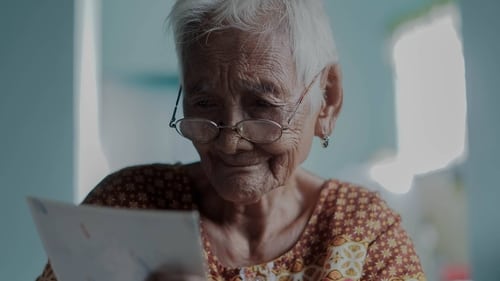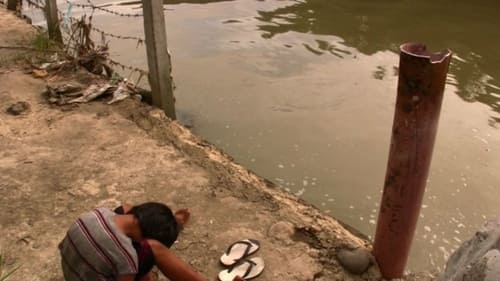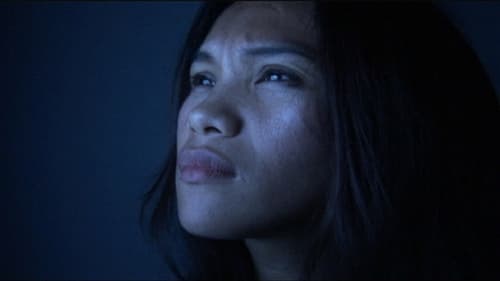
Director
Rooted in Filipino realities – both concrete and cinematically reimagined – John Torres’ meticulous yet generous approach is a synthesis of the personal and the political. Assembling fragments of discordant images and murmuring voices, this inventive parable creates a present that appears alien and a future that feels familiar.

Producer
In Age of Blight, 12 Asian filmmakers capture and imagine life under the pandemic, from the hospital corridors of Marawi to protest rallies in the streets of Bangkok. The film mirrors light amidst the chaos and darkness, life in the face of death. Participating filmmakers are Mervine Aquino (Philippines), Bagane Fiola (Philippines), Daniel Rudi Haryanto (Indonesia), Hassanodden Hashim (Philippines), Gladys Ng (Singapore), Nontawat Numbenchapol (Thailand), Carla Pulido Ocampo (Philippines), Edmund Telmo (Philippines), Mark Lester Valle (Philippines), Ligaya Villablanca (Philippines), Takayuki Yoshida (Japan), and Abdul Zainidi (Brunei). Edited and assembled by John Torres (Philippines).

Post Production Coordinator
In Age of Blight, 12 Asian filmmakers capture and imagine life under the pandemic, from the hospital corridors of Marawi to protest rallies in the streets of Bangkok. The film mirrors light amidst the chaos and darkness, life in the face of death. Participating filmmakers are Mervine Aquino (Philippines), Bagane Fiola (Philippines), Daniel Rudi Haryanto (Indonesia), Hassanodden Hashim (Philippines), Gladys Ng (Singapore), Nontawat Numbenchapol (Thailand), Carla Pulido Ocampo (Philippines), Edmund Telmo (Philippines), Mark Lester Valle (Philippines), Ligaya Villablanca (Philippines), Takayuki Yoshida (Japan), and Abdul Zainidi (Brunei). Edited and assembled by John Torres (Philippines).

Editor
In Age of Blight, 12 Asian filmmakers capture and imagine life under the pandemic, from the hospital corridors of Marawi to protest rallies in the streets of Bangkok. The film mirrors light amidst the chaos and darkness, life in the face of death. Participating filmmakers are Mervine Aquino (Philippines), Bagane Fiola (Philippines), Daniel Rudi Haryanto (Indonesia), Hassanodden Hashim (Philippines), Gladys Ng (Singapore), Nontawat Numbenchapol (Thailand), Carla Pulido Ocampo (Philippines), Edmund Telmo (Philippines), Mark Lester Valle (Philippines), Ligaya Villablanca (Philippines), Takayuki Yoshida (Japan), and Abdul Zainidi (Brunei). Edited and assembled by John Torres (Philippines).

Creative Consultant
Stories of Filipino men and women, and other living things passing through similar objects, familiar spaces, non-linear time and dreams alike–all connected from the lens and experience of a stranger, an Alien whose language is disconnected and demands an interaction from the viewer to reconnect these stories to find their own meaning.

Director
John Torres repurposes documentary footage captured from the sets of various Filipino productions (including the likes of Lav Diaz and Erik Matti) into an eerie, elliptical sci-fi narrative about human avatars controlled by apps.

Production Design
A family moves into a secluded mansion where they soon find themselves being targeted by an entity taking the form of a giant spider.

Lighting Design
Tristan, King Marke’s most loyal vassal, takes the Irish princess Isolde to Cornwall to be married off to his master. During the journey, Isolde uses a deadly poison in an attempt to extinguish the intense but unspoken love between her and Tristan that had arisen beforehand. Isolde’s confidante Brangäne, however, replaces the poison with a love potion. From that moment, Tristan and Isolde become inseparably linked. Their secret love is soon betrayed to King Marke by the jealous Melot, who also fatally wounds Tristan. He is brought to his island, longing for one final meeting with Isolde before he dies. When she eventually comes, he himself pulls open his wound and collapses in her arms. Isolde follows him, dying in the most sublime ecstasy.

Editor
Eight year-old Yael, shy to a fault, lives in her own private world. One day she finds out about a pen that can "translate" the thoughts and feelings of nervous people.

Producer
Eight year-old Yael, shy to a fault, lives in her own private world. One day she finds out about a pen that can "translate" the thoughts and feelings of nervous people.

Editor
A half-black half-Filipino Michael Jordan wanna-be sets his way towards his “hoop dreams.”

Creative Consultant
During the World War 2, Japanese soldiers raid houses in the Philippines. Thousands of men were shot and killed while women were brought to the Bahay na Pula and raped. The Bahay na Pula is being demolished. From the 1000+ comfort women, only a few remain alive, or fighting to be alive.

Director
Inspired by an artist's drawings in the South, I saw paintings that depicted the indigenous people's view of the origins of the world. The film is the tale of our nation and basic things: water, plants, body, and their own interaction through time.

Electrician
After a popular teen falls to her death, her best friend basks in the glow of the social media attention, while their rival seeks to avenge the past and uncover the truth behind the mysterious death.

Director
The unfinished movie of the late Celso Ad Castillo now a Cinema One Originals documentary film.

A news team investigating rumors of aswang killings in a remote barrio are attacked by a group of soldiers, forcing them to run for their lives in the deeps of the forest, where more mystery and danger lay in wait.

Producer
Tuding sets out on a journey to a distant town to track down the man who got her youngest sister pregnant, and she’s not going home without him. A pancit western set in the late-1940s.

Editor
A small town in the Philippines is turned upside down by the arrival of a film crew that has everyone excited. Meanwhile, 13-year-old Lukas finds his own world overturned when he is told that his father is a tikbalang (half horse, half man). His father’s disappearance leaves Lukas to try to unravel the mystery of his own heritage and his own nature.

Screenplay
A small town in the Philippines is turned upside down by the arrival of a film crew that has everyone excited. Meanwhile, 13-year-old Lukas finds his own world overturned when he is told that his father is a tikbalang (half horse, half man). His father’s disappearance leaves Lukas to try to unravel the mystery of his own heritage and his own nature.

Director
A small town in the Philippines is turned upside down by the arrival of a film crew that has everyone excited. Meanwhile, 13-year-old Lukas finds his own world overturned when he is told that his father is a tikbalang (half horse, half man). His father’s disappearance leaves Lukas to try to unravel the mystery of his own heritage and his own nature.

A group of friends, sharing a passion for cinema, assemble in Corregidor, a small island in Manila Bay that has preserved relics from the Pacific War as its foremost attractions. There, they explore the island and retire in a rustic mansion used once to make silent films. Outside the city, the woods and sea become a meeting place for more movie personalities and it all becomes a celebration of what was left behind.

Director
Village miracles caught on tape: images of a river that must be crossed to erase heartaches, imagined with a boy who has never experienced sorrow.

Producer
BIG BOY is a coming-of-age tale about a boy and his family in 1950s Mindoro, Philippines, and how he is groomed into becoming the poster boy for his parent's home-based business. The film is an experimental portrait of a family amidst change -- an experience that will engage audiences in something strange but familiar.

Cinematography
"Mapang-akit" is an offshoot of a documentary project made with an Icelandic filmmaker and uses the outtakes from the Hudas Hudas festival in Antique, where a community bonds over a large effigy of Judas Iscariot during Holy Week. Amidst it is a found story of a man who returns home to his death after pursuing a woman in a neighboring village.

Director
"Mapang-akit" is an offshoot of a documentary project made with an Icelandic filmmaker and uses the outtakes from the Hudas Hudas festival in Antique, where a community bonds over a large effigy of Judas Iscariot during Holy Week. Amidst it is a found story of a man who returns home to his death after pursuing a woman in a neighboring village.

Cinematography
A touching ode to Leonardo de la Cruz, the filmmaker's late father, who died earlier this year of lung cancer at the age of 65, the film is a personal meditation of sorts. It is at once dark, yet not unrelieved by poetry on the mysteries of life, existence and mortality.

Director
A film inspired by birds, planes, and flight. Based on a poem by Filipino writer Allan Pastrana.

Director of Photography
No description found

Director
Black-and-white sequence of contemporary urban life, jittery images recorded by a 1940s motion-picture camera, and a sleepy narration of words, written by Filipino poet and singer Lourd De Veyra.

Director
A couple wakes up and talks about a dream.

Cinematography
Sarah is a debt collector who lives among the inhabitants of the village of Guimbal on the island of Panay. She wants to find the young man who appeared to her in a dream and goes to the island of Negros. Here, as she interacts with the inhabitants, Sarah continues her search, gathering memories of life and war, dreams, myths, legends, songs and stories that she takes part in and at times revolve around her. She is the daughter of an ancient mermaid, a revolutionary, a primordial element, a virgin who was kidnapped and hidden away from the sunlight. “The film is a retelling of fragments of the American occupation. Dialogue, shot in the Hiligaynon language, is not translated but used as a tonal guide and a tool for narration. Using unscripted scenes shot where the main character was asked to merely interact with the villagers, I discard dialogue and draw meaning from peoples’ faces, voices, and actions, weaving an entirely different story through the use of subtitles and inter-titles.”

Producer
Sarah is a debt collector who lives among the inhabitants of the village of Guimbal on the island of Panay. She wants to find the young man who appeared to her in a dream and goes to the island of Negros. Here, as she interacts with the inhabitants, Sarah continues her search, gathering memories of life and war, dreams, myths, legends, songs and stories that she takes part in and at times revolve around her. She is the daughter of an ancient mermaid, a revolutionary, a primordial element, a virgin who was kidnapped and hidden away from the sunlight. “The film is a retelling of fragments of the American occupation. Dialogue, shot in the Hiligaynon language, is not translated but used as a tonal guide and a tool for narration. Using unscripted scenes shot where the main character was asked to merely interact with the villagers, I discard dialogue and draw meaning from peoples’ faces, voices, and actions, weaving an entirely different story through the use of subtitles and inter-titles.”

Screenplay
Sarah is a debt collector who lives among the inhabitants of the village of Guimbal on the island of Panay. She wants to find the young man who appeared to her in a dream and goes to the island of Negros. Here, as she interacts with the inhabitants, Sarah continues her search, gathering memories of life and war, dreams, myths, legends, songs and stories that she takes part in and at times revolve around her. She is the daughter of an ancient mermaid, a revolutionary, a primordial element, a virgin who was kidnapped and hidden away from the sunlight. “The film is a retelling of fragments of the American occupation. Dialogue, shot in the Hiligaynon language, is not translated but used as a tonal guide and a tool for narration. Using unscripted scenes shot where the main character was asked to merely interact with the villagers, I discard dialogue and draw meaning from peoples’ faces, voices, and actions, weaving an entirely different story through the use of subtitles and inter-titles.”

Director
Sarah is a debt collector who lives among the inhabitants of the village of Guimbal on the island of Panay. She wants to find the young man who appeared to her in a dream and goes to the island of Negros. Here, as she interacts with the inhabitants, Sarah continues her search, gathering memories of life and war, dreams, myths, legends, songs and stories that she takes part in and at times revolve around her. She is the daughter of an ancient mermaid, a revolutionary, a primordial element, a virgin who was kidnapped and hidden away from the sunlight. “The film is a retelling of fragments of the American occupation. Dialogue, shot in the Hiligaynon language, is not translated but used as a tonal guide and a tool for narration. Using unscripted scenes shot where the main character was asked to merely interact with the villagers, I discard dialogue and draw meaning from peoples’ faces, voices, and actions, weaving an entirely different story through the use of subtitles and inter-titles.”

Himself
Documentary profiling the directors involved in the loose Philippine New Wave filmmaking movement.

Director of Photography
An examination of poverty and violence and the influence it has on two boys who live in a slum.

Art Direction
Filmmaker John Torres describes his childhood and discusses his father's infidelities.

Sound Designer
Filmmaker John Torres describes his childhood and discusses his father's infidelities.

Writer
Filmmaker John Torres describes his childhood and discusses his father's infidelities.

Screenplay
Filmmaker John Torres describes his childhood and discusses his father's infidelities.

Editor
Filmmaker John Torres describes his childhood and discusses his father's infidelities.

Cinematography
Filmmaker John Torres describes his childhood and discusses his father's infidelities.

Producer
Filmmaker John Torres describes his childhood and discusses his father's infidelities.

Director
Filmmaker John Torres describes his childhood and discusses his father's infidelities.

Cinematography
Basically an artist is also a terrorist, the protagonist thinks in an unguarded moment. And if he is a terrorist after all, then he might just as well be one. Not an instant product, but an experimental feature in which diary material is brought together to form an intriguing puzzle.

Writer
Basically an artist is also a terrorist, the protagonist thinks in an unguarded moment. And if he is a terrorist after all, then he might just as well be one. Not an instant product, but an experimental feature in which diary material is brought together to form an intriguing puzzle.

Producer
Basically an artist is also a terrorist, the protagonist thinks in an unguarded moment. And if he is a terrorist after all, then he might just as well be one. Not an instant product, but an experimental feature in which diary material is brought together to form an intriguing puzzle.

Editor
Basically an artist is also a terrorist, the protagonist thinks in an unguarded moment. And if he is a terrorist after all, then he might just as well be one. Not an instant product, but an experimental feature in which diary material is brought together to form an intriguing puzzle.

Director
Basically an artist is also a terrorist, the protagonist thinks in an unguarded moment. And if he is a terrorist after all, then he might just as well be one. Not an instant product, but an experimental feature in which diary material is brought together to form an intriguing puzzle.

Narrator
Basically an artist is also a terrorist, the protagonist thinks in an unguarded moment. And if he is a terrorist after all, then he might just as well be one. Not an instant product, but an experimental feature in which diary material is brought together to form an intriguing puzzle.

Director
TAWIDGUTOM is an experimental love poem composed of images that recur and repeat themselves.

Director
Black-and-white sequence of contemporary urban life, jittery images recorded by a 1940s motion-picture camera, and a sleepy narration of words, written by Filipino poet and singer Lourd De Veyra.

Director
A young lady recovers something from a recycle bin. He is brought back to life. She sleeps. He sees his future in her through photographs from her past.

Director
A mobile phone film shot in Mahiyan Street (Shy Street), Sikatuna, a stone's throw away from the house of Chavit Singson, who also led the masses to bring then-president Estrada out of the presidential palace.












































